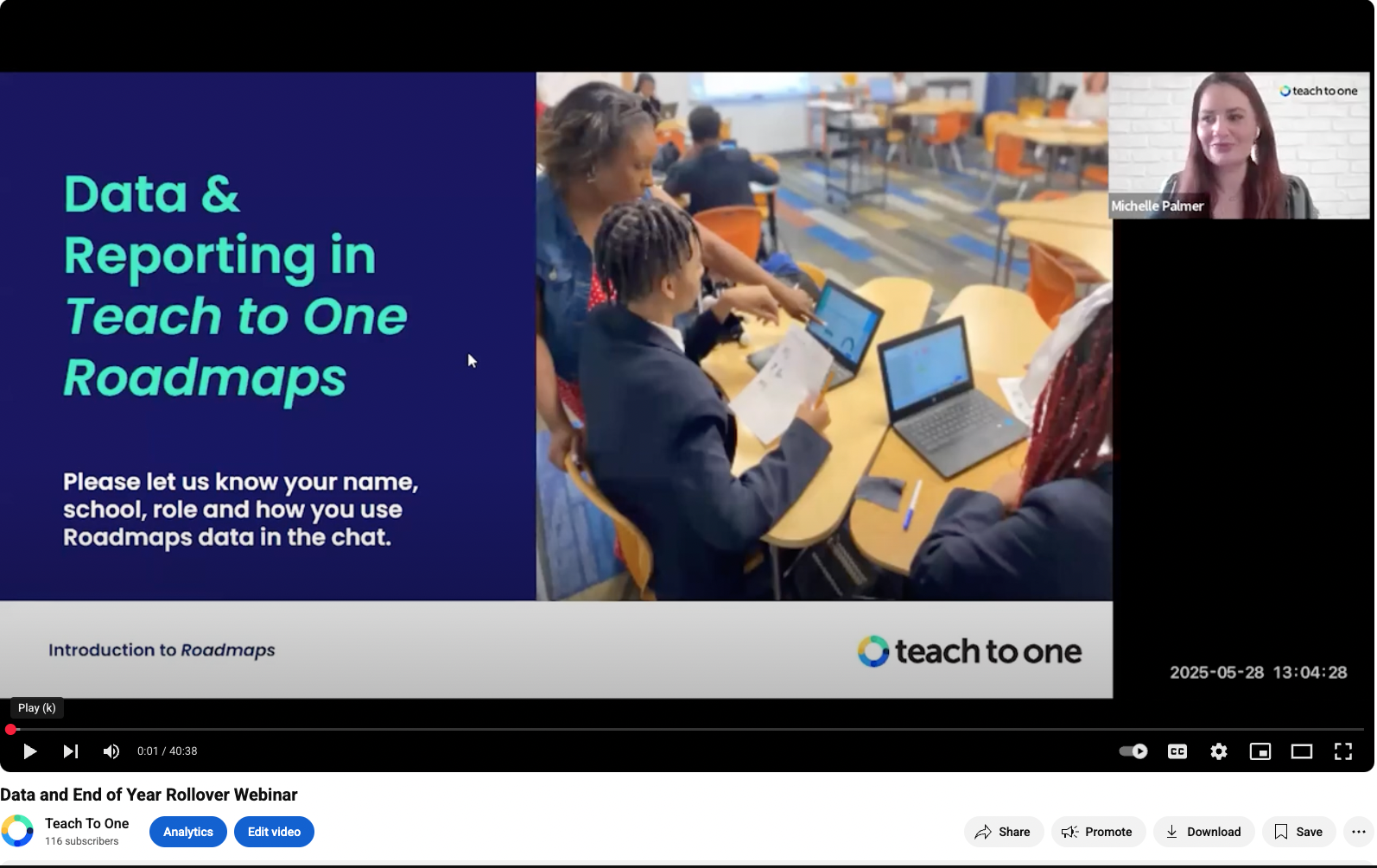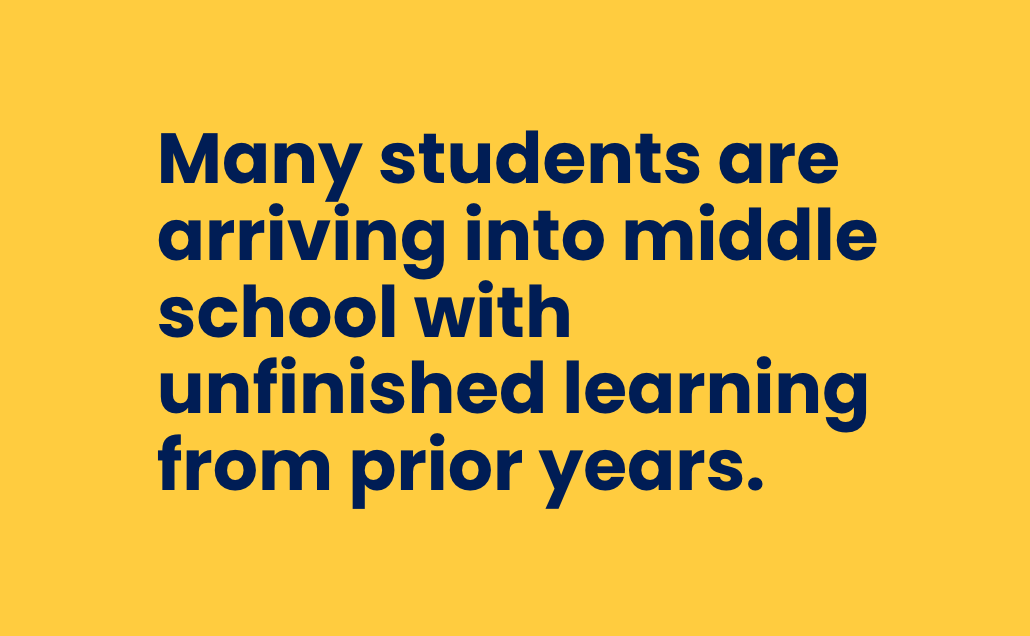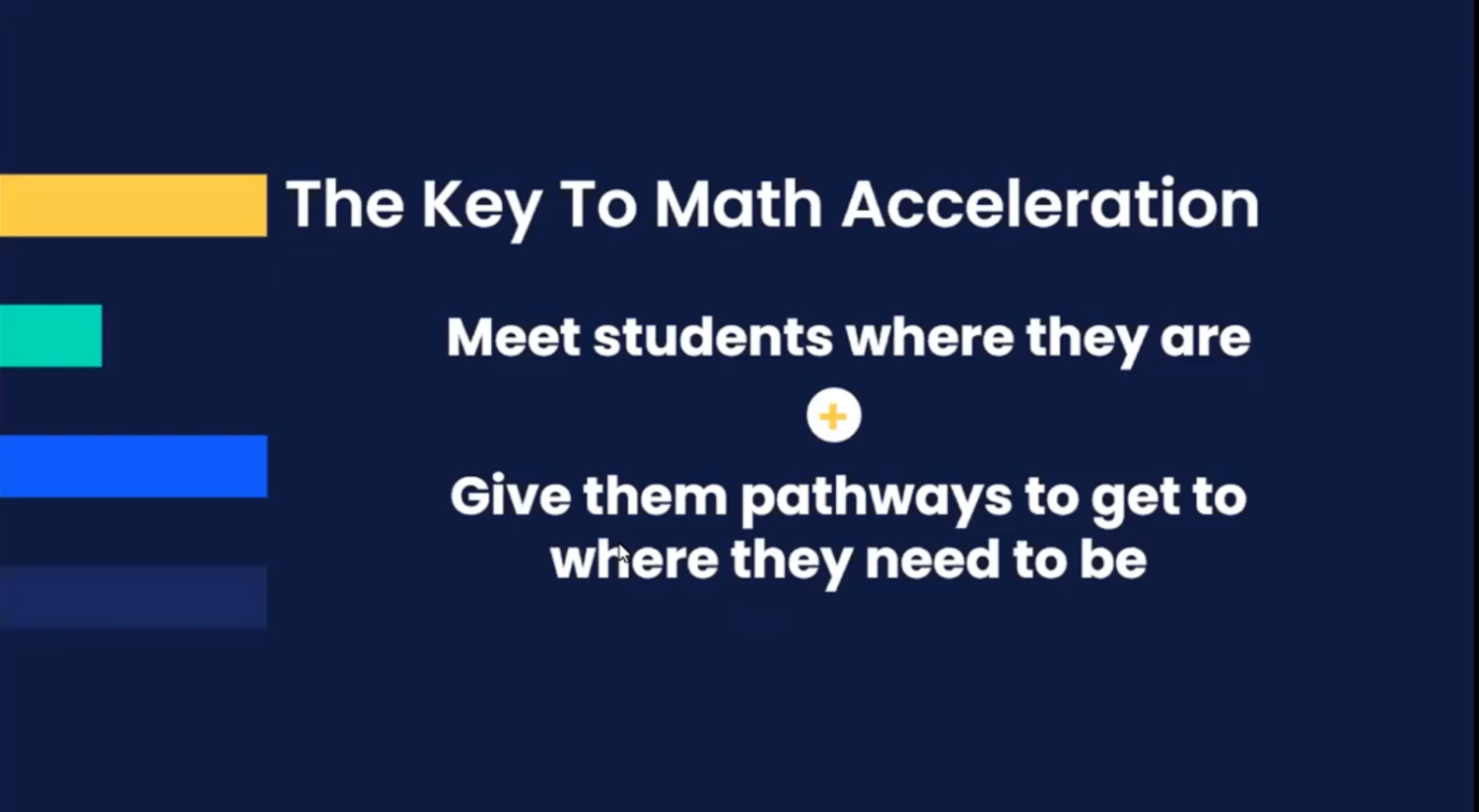Building a Healthy and Robust R&D Ecosystem in the Education Sector
October 06, 2021
By Teach to One

When it comes to our national education system, what’s missing from education research and development (R&D)? And how can we build a stronger R&D ecosystem in education? A group of panelists aimed to answer these questions earlier this year at the ASU+GSV Summit session “Missing Links in Education R&D: Obvious but Overlooked Game-Changers.” In this blog post, we recapped the conversation by highlighting four key takeaways from the event.
(Chris Rush, co-founder and chief program officer of New Classrooms, the creators of Teach to One, is on sabbatical following his U.S. Department of Education appointment earlier this year.)
The conversation focused on addressing the missing links in K-12 R&D, and brought in leading perspectives from government, philanthropy, nonprofit, and private sectors. In a presentation to kick off the event, Chris Rush, a senior advisor for innovation and director of education technology at the Department of Education, pointed out that in K-12 education, just 0.05 percent of the sector’s total expenditures are on R&D. In comparison, many of the country’s most innovative fields invest as much as 15 percent of their total expenditures in research and development. From vaccine development to the Madden NFL gaming franchise, R&D is a major driver of progress and innovation for many fields, industries, and sectors.

Incomplete R&D
In education, Rush said, education R&D too often skips the first stage of R&D, which is all about trying to deeply understand the fundamental problem. Instead, a lot of time is spent in stage two and three of R&D, which is about developing solutions to test and then distributing them for implementation.
A Robust Education R&D Ecosystem
Jim Shelton, Chief Investment and Impact Officer at Blue Meridian Partners, facilitated the discussion with featured panelists. The conversation focused on several elements that can create a healthy and robust education R&D ecosystem, echoing Rush’s call for more early stage research and development. Creating incubator sites, advancing an innovation-friendly policy framework, and creating the conditions for demand were other key factors highlighted.
A More Inclusive Vision for Education R&D
One critical factor for R&D is to have ‘innovation zones and testbed sites’ to allow for all stakeholders in the R&D process to be on the same page. Shelton said a more inclusive model of R&D that accounts for more voices will affect change at multiple levels, from the district to the classroom. Having high-quality evaluation processes and developing new policies are also important to having new models.
Kimberly Smith, who is executive Director of the League of Innovative Schools and the Center for Inclusive Innovation at Digital Promise, said K-12 R&D has not been well represented when it comes to communities of color, students with low socioeconomic status, and students with special learning challenges. These groups, she said, could benefit the most from innovative solutions.
“The idea is to ensure that they are at the table, not just in focus groups, not just in surveys, not just in feedback, but in the process itself,” Smith said.
Melina Uncapher, program director for the Advanced Education R&D Fund (AERDF), said one big missing link is that educators need to be more fully engaged in the R&D process. Current education R&D models, Uncapher said, are too linear. Too often, they are engaged only at the very end of the R&D cycle. As a result, their wisdom is not fully captured earlier on in the process.
Creating an infrastructure for a robust R&D ecosystem would establish policies and practices that allow researchers, developers, and educators to “come together at the table at the same time,” Uncapher said.
Demanding Innovation
Former U.S. Education Secretary Arne Duncan said he knows from first-hand experience there is no shortage of great ideas out there. “For every problem in education, I promise you, I saw a place that was solving it,” said Duncan, who is now a managing partner at Emerson Collective.
“What we don’t do in education is we don’t scale,” Duncan said. “We don’t take what works and expand it.”
Under Duncan, the federal education department launched and began funding the Advanced Research Projects Agency for Education (ARPA-ED). A lack of funding was one reason the work stalled.
“We had so many more great ideas than we had money available. We just couldn’t get Congress to appropriate more money to fund more good ideas coming from the community.”
Duncan said creating the conditions for demanding innovation was also critical. It couldn’t just come from Washington, D.C. or Congress, but needed to be driven by states and locally, by political leadership as well as from parents and kids.
“We don’t have that kind of pressure. We don’t have that kind of demand. So, how do we create, wherever you are, the conditions and infrastructure to demand innovation?”
Despite the challenges, Rush and fellow panelists expressed optimism for the future, especially as lawmakers continue to negotiate and refine infrastructure legislation that is at the top of the Biden Administration’s agenda.
“If we can pull together the right case. If we can pull together the right supporters, there is a moment right now where we might be able to get a meaningful amount of money flowing towards this,” Rush said.
Teach to One is one of the few providers with an investment in R&D in order to deliver student growth and impact with innovative learning solutions. Interested in bringing innovation to your school? Schedule a call or contact us and a member of our team will reach out to you.
Latest Posts

Recording: Data and End of Year Rollover Webinar
In this 45-minute webinar recording, Michelle Palmer, Senior Director of Customer Success, and Liat Greenspan, Associate Director of Program Success, explain how to assign a skill or pathway, use the Teacher Dashboard to identify struggling students, leverage the Reports Hub for weekly planning, and monitor growth and engagement on the Progress Page.

Innovative Learning Solutions: A Path to a Schooling Revolution

Showcase: Teach to One Roadmaps